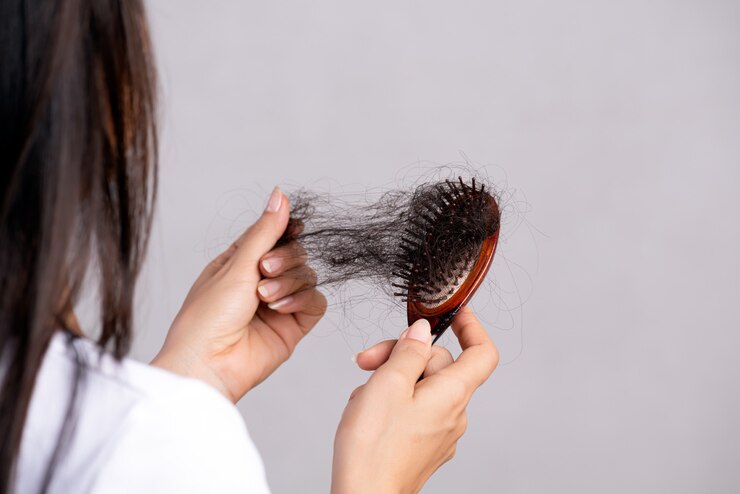Hot Oil Treatment for Hair: Unlocking Its Benefits and How To Use

Have you ever looked in the mirror and felt frustrated with your dry, dull, or damaged hair? If so, you’re not alone. Many of us struggle with hair issues, whether it’s frizz, split ends, or a lack of shine. But what if there was a simple, natural solution that could transform your locks? Enter the hot oil treatment for hair – a time-tested method that’s been used for centuries to nourish and revitalize hair from root to tip.
In this comprehensive guide, we’ll dive deep into the world of hot oil treatments, exploring their numerous benefits, the science behind why they work, and how you can easily incorporate them into your hair care routine at home. Whether you’re a hair care novice or a seasoned beauty enthusiast, this article will provide you with all the information you need to achieve healthier, more beautiful hair.
What Is a Hot Oil Treatment for Hair?
Before we delve into the benefits and how-to’s, let’s start with the basics. A hot oil treatment is exactly what it sounds like – a method of applying warm oil to your hair and scalp. This process helps to open up the hair cuticles, allowing the oil to penetrate deeply into the hair shaft and scalp, providing intense nourishment and hydration.
Hot oil treatments have been used for centuries in various cultures around the world. In India, for example, the practice of oiling hair is deeply rooted in Ayurvedic traditions and is often referred to as “champi.” In ancient Egypt, both men and women used oils to keep their hair healthy and protect it from the harsh desert climate.
Today, hot oil treatments have gained popularity worldwide as a natural and effective way to improve hair health. They can be done at home with simple ingredients or purchased as ready-made products from beauty stores.
The Benefits of Hot Oil Treatment for Hair
Hot oil treatments offer a wide range of benefits for your hair and scalp. Let’s explore some of the most significant advantages:
1. Deep Hydration and Moisture
One of the primary benefits of a hot oil treatment is its ability to provide deep hydration to your hair. The warmth of the oil helps to open up the hair cuticles, allowing the moisture to penetrate deep into the hair shaft. This is particularly beneficial for those with dry, brittle, or damaged hair.
2. Improved Hair Strength and Elasticity

Regular hot oil treatments can help strengthen your hair from within. The oils used in these treatments are often rich in vitamins and fatty acids that nourish the hair, making it more resilient and less prone to breakage. This can lead to stronger, healthier hair that’s less likely to suffer from split ends or breakage.
3. Stimulated Hair Growth
Hot oil treatments can also stimulate hair growth. When you massage warm oil into your scalp, it increases blood circulation to the hair follicles. This improved blood flow can help to nourish the follicles and potentially stimulate hair growth.
4. Reduced Frizz and Improved Shine
If you struggle with frizzy hair, hot oil treatments can be a game-changer. The oils help to smooth the hair cuticles, reducing frizz and adding a healthy shine to your locks. This can make your hair look healthier and more manageable.
5. Scalp Health
Hot oil treatments aren’t just good for your hair – they’re great for your scalp too. Many oils used in these treatments have antimicrobial and anti-inflammatory properties that can help soothe an itchy or irritated scalp. They can also help balance the natural oils on your scalp, potentially reducing issues like dandruff.
6. Protection from Environmental Damage
Regular hot oil treatments can create a protective layer on your hair, shielding it from environmental stressors like pollution, sun damage, and heat styling. This can help keep your hair healthier in the long run.
Choosing the Right Oil for Your Hair Type
Not all oils are created equal when it comes to hot oil treatments. Different oils have different properties and benefits, and what works best for you will depend on your hair type and specific hair concerns. Here are some popular oils and their benefits:
Coconut Oil
- Ideal for: All hair types, especially dry or damaged hair
- Benefits: Deep moisturizing, protein retention, antibacterial properties
Olive Oil
- Ideal for: Thick, dry, or color-treated hair
- Benefits: Rich in antioxidants, helps prevent breakage, adds shine
Argan Oil
- Ideal for: All hair types, especially frizzy or curly hair
- Benefits: Rich in vitamin E, adds shine, tames frizz
Jojoba Oil
- Ideal for: All hair types, especially oily scalps
- Benefits: Similar to natural scalp sebum, balances oil production, moisturizes without being greasy
Avocado Oil
- Ideal for: Dry, damaged, or color-treated hair
- Benefits: Rich in vitamins and fatty acids, deeply nourishing
Castor Oil
- Ideal for: Those looking to promote hair growth
- Benefits: Rich in ricinoleic acid, may help stimulate hair growth, thickens hair
You can use these oils individually or create a blend to target multiple hair concerns. For example, a mixture of coconut oil and castor oil could provide deep moisture while potentially promoting hair growth.
How to Do a Hot Oil Treatment at Home
Now that you understand the benefits and have chosen your oil, let’s walk through the steps of doing a hot oil treatment at home:
Step 1: Choose and Heat Your Oil
Select your oil or oil blend. Warm the oil gently by placing the container in a bowl of hot water. The oil should be warm, but not hot – test it on your wrist to ensure it’s not too hot for your scalp.
Step 2: Prepare Your Hair
Brush or comb your hair to remove any tangles. If your hair is very dirty, you might want to wash it first, but it’s generally fine to apply the oil to unwashed hair.
Step 3: Apply the Oil
Starting at your scalp, apply the warm oil in sections, massaging it into your scalp with your fingertips. Work your way down to the ends of your hair, ensuring all of your hair is coated.
Step 4: Massage and Wait
Spend a few minutes massaging your scalp to stimulate blood flow. Then, wrap your hair in a warm towel or shower cap. The heat will help the oil penetrate more deeply. Leave the oil on for at least 30 minutes, or overnight for an intensive treatment.
Step 5: Rinse and Shampoo
Rinse your hair thoroughly with warm water, then shampoo as usual. You may need to shampoo twice to remove all the oil.
Step 6: Condition and Style
Follow up with your regular conditioner and style as usual. You should notice that your hair feels softer and looks shinier immediately.
Frequency of Hot Oil Treatments
How often you should do a hot oil treatment depends on your hair type and condition:
- For normal to slightly dry hair: Once a week or every other week
- For very dry or damaged hair: Once or twice a week
- For oily hair: Once every two to three weeks
Remember, it’s possible to overdo it with hot oil treatments. If you notice your hair becoming greasy or limp, reduce the frequency of treatments.
Tips for Maximizing the Benefits of Hot Oil Treatments
To get the most out of your hot oil treatments, consider these tips:
- Be consistent: Regular treatments will yield the best results.
- Don’t overheat the oil: Overheated oil can damage your hair and scalp. Always test the temperature before applying.
- Focus on your scalp: A healthy scalp leads to healthy hair, so don’t neglect it during your treatment.
- Try overnight treatments: For an extra boost of hydration, leave the oil in overnight.
- Use a clarifying shampoo occasionally: This can help remove any oil buildup if you’re doing frequent treatments.
- Combine with other hair care practices: Hot oil treatments work well in conjunction with other hair care methods like deep conditioning and hair masks.
Potential Side Effects and Precautions
While hot oil treatments are generally safe for most people, there are a few things to keep in mind:
- Allergies: Always do a patch test before trying a new oil to ensure you’re not allergic.
- Scalp conditions: If you have a scalp condition like psoriasis or seborrheic dermatitis, consult with a dermatologist before starting hot oil treatments.
- Acne-prone skin: If you’re prone to acne, be careful not to let the oil drip onto your face during treatment.
- Hair type considerations: Very fine or naturally oily hair may become weighed down by too-frequent oil treatments.
Conclusion
Hot oil treatments for hair offer a natural, effective way to nourish and revitalize your locks. From providing deep hydration to promoting hair growth and reducing frizz, the benefits are numerous. By understanding how to choose the right oil for your hair type and following the proper application techniques, you can easily incorporate this traditional beauty practice into your hair care routine.
Remember, healthy hair is a journey, not a destination. While hot oil treatments can provide significant benefits, they work best as part of a comprehensive hair care routine that includes a balanced diet, proper hydration, and gentle hair care practices.
So why not give hot oil treatments a try? Your hair might just thank you with newfound strength, shine, and vitality. Here’s to healthier, more beautiful hair – naturally!